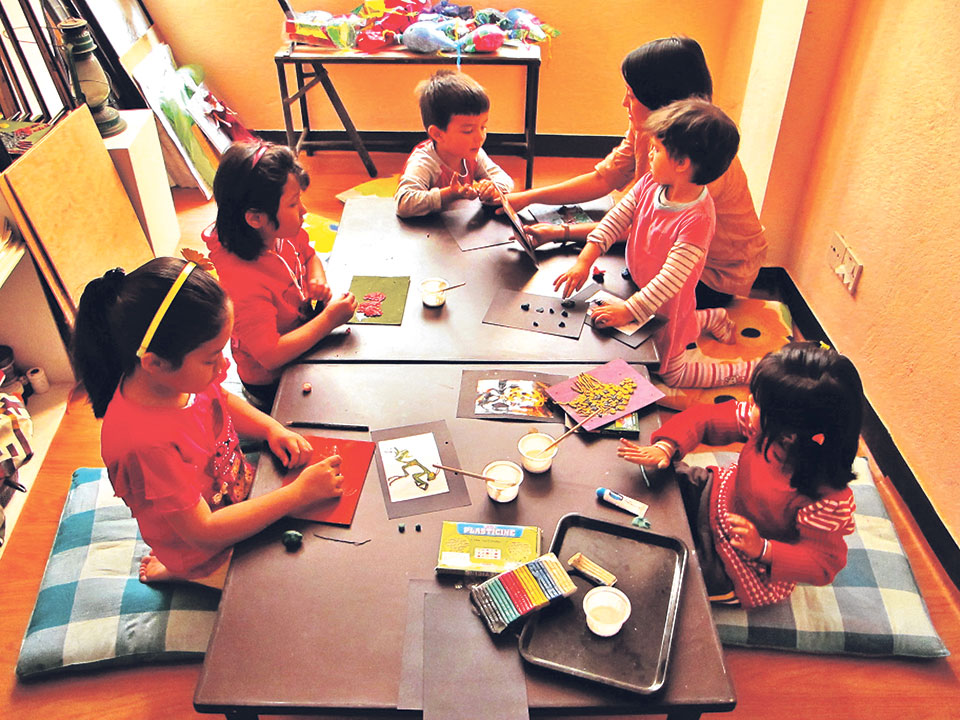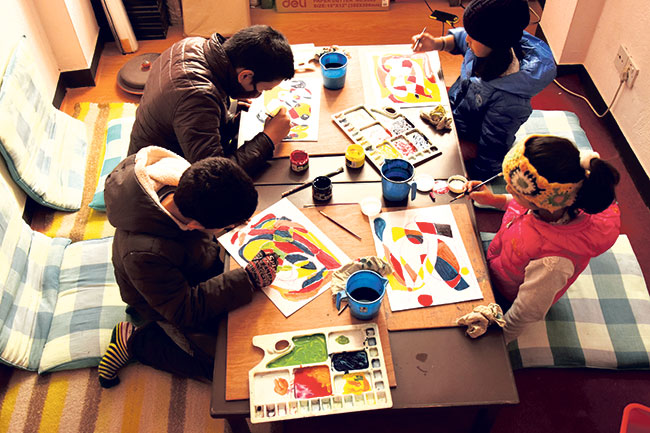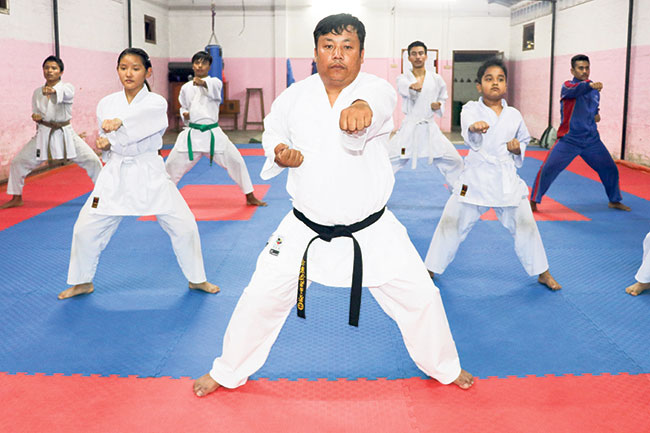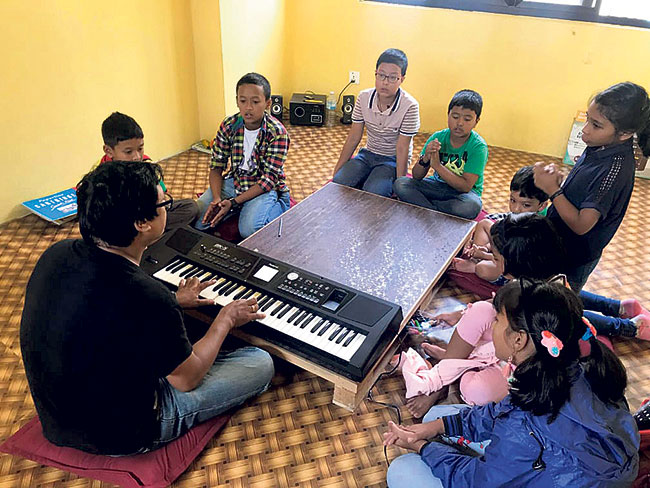Cham: The Dance Meditation (With Video)
5 years ago

5 years ago

5 years ago

5 years ago

5 years ago

5 years ago

KATHMANDU, Oct 6: The rise in the cutting edge technology have made the new generation of children much smarter and tech-savvy than their predecessors. At an early age, they master the skills of unlocking phones and relishing the joys of advanced gadgets. Although spending time, and playing games on gadgets are considered to improve hand-eye coordination and brain speed, is it how we want our kids to grow up? Does that justify our idea of wanting them to be quick-witted and smart the way we would actually want them to be?
A new study published in ‘Frontiers in Neuroscience’ in March 2018, shows that music lessons actually make children smarter, enhancing their cognitive capabilities and academic performance in unrelated subjects. Visual arts lessons were also found to significantly improve children’s visual and spatial memory.
Children have a great mind for creativity and multiple abilities. The sooner they are provided the sphere to explore and experiment these abilities, the easier it is to enhance their talents.
Art for art’s sake
From the conventional art which limit the creativity of artists, the modern-day practices of art has slightly changed at present. Before it was more compressed to materials; the ideas and creativity of artists barely came to play. However, as the artists started taking their skills beyond their canvasses, art found space in the academic curriculum. Harboring similar idea of practicing art, Drawing Room at Jhamsikhel unleashes the abilities of young artists through their innovative approach toward modern arts.

Art is a form of therapy because it is a practice that helps release emotions and feelings that most people suppress. It goes through various processes, procedures and requires a proper lesson plan to run classes, especially for children.
“As mentors, we have observed progressive activities in children. Many times the outcomes of such classes are behaviorally visible,” said art instructor Sanjeev Maharjan. “With longer sessions attended and an ample amount of time spent on art, the children learn to be more expressive, calmer and patient. This also helps to track down children’s psycho-emotional growth,” he added.
Children gather and engage in several activities. The themes vary; on some days the instructors assign the students with work related to art, on other days they are given wooden blocks or clay to be expressive.
“Although some parents enroll their children in the class with hopes that their children will draw better science diagrams, we mainly focus on enhancing children’s artistic skills and ensuring better psycho-emotional well-being,” said another art instructor Sunee Maharjan.
Reinventing martial arts
As much as emotional cleansing contributes to children’s psychological well-being, the art of being physically strong can boost up their self-esteem and confidence. Although the conventional societal ideology barely encourages women to engage in any kind of sports, there is an urging need for women to be as competent as men when it comes to mastering self-defense and martial arts.
Samakhushi Dojo has been providing kickboxing and Karate training for more than two decades. Japanese Karate has four forms -- Wado-Ryu, Goju-Ryu, Shito-, and Shotokan. Each has individual practice methods. Since I am an expert on Shito-Ryu, I teach the skills of Shito-Ryu to the students,” said branch chief and instructor Rajendra Kumar Ojha.

Although the numbers of girls are few compared to the boys, the need for teaching martial arts to females have lately been realized by the parents, citing the increase in social crimes against youths, especially girls,” added Ojha.
“I have been taking karate classes for the past six months. I can feel the change in me. I am an orange belt, and I have become much stronger,” said 13-year-old trainee Swadikshya Chhetri.
14-year-old Neha Gurung is estastic with her decision of joining karate. Sharing her experience, she said, “I was inspired to join karate watching my friends. My initial goal was to lose weight. However, I later came to find out that it was more than just losing weight. My parents were not ready at first but I convinced them.” Gurung has been learning karate for about two months.
Introducing music from an early age
Children can fulfill musical aspiration of learning to play an instrument through online sources. However, proper guidance with well-structured lesson plans can help keep them motivated. It also helps the children to further understand notes and rhythm. They can seek a long-term career in music when the basic requisites are fulfilled.
“Learning music in a team enables children to learn from one another,” said Sachen Bajracharya, music instructor at Arambha, Tahachal.

“It is fun, but at the same time it is equally challenging to instruct children, most of whom are beginners. For now, we have been providing lessons on guitar and keyboard. We are planning to include classes on folk instruments as well,” added Bajracharya.
To make sure music classes are not monotonous, special classes on art and painting are also provided. “We have included art classes along with music lessons during weekdays,” said Art Instructor at Arambha, Anup J. Chitrakar. Further explaining the importance of encouraging children to make their own decision, he added, “Keeping an option will ensure liberation upon children. It will encourage them to make choice based on their own will”.
Leave A Comment